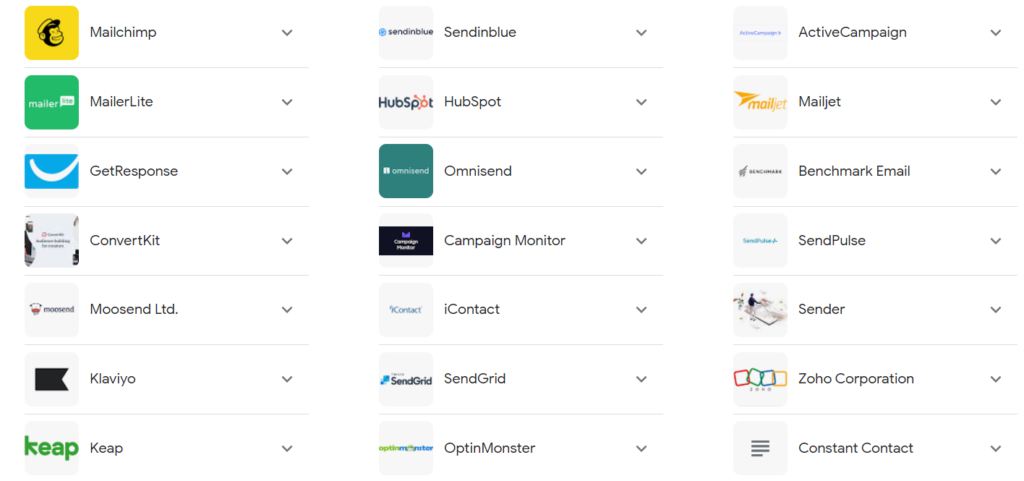Email marketing plays a vital role in today’s digital era. It allows us to connect with individuals, businesses, and organizations worldwide. However, not all emails are created equal. To make an impact and achieve your desired goals, it’s crucial to master the art of writing effective emails. In this article, we will guide you through the process of crafting compelling emails that engage your audience and yield positive results.
Table of Contents
1. Introduction
In a fast-paced world where attention spans are shrinking, writing effective emails is essential. Whether you’re sending a professional message, a sales pitch, or a simple inquiry, your email must capture the recipient’s attention and deliver your message concisely.
2. Importance of Effective Email Writing
Effective email writing can make or break your communication efforts. It enables you to convey your thoughts clearly, build strong relationships, and achieve desired outcomes. Poorly written emails can lead to misunderstandings, overlooked messages, and missed opportunities. By mastering the art of crafting effective emails, you can enhance your professional image and increase the likelihood of achieving your objectives.
3. Understanding Your Audience
Before diving into writing an email, it’s crucial to understand your audience. Consider their demographics, interests, and preferences. Tailoring your message to resonate with your recipients will significantly increase the chances of eliciting a positive response. Take the time to research and analyze your target audience, enabling you to craft personalized and relevant content.
4. Crafting a Compelling Subject Line
The subject line is the first impression your email makes. It determines whether the recipient opens your email or consigns it to the depths of their inbox. To create an effective subject line, make it concise, intriguing, and relevant to the content of your email. Avoid clickbait tactics and focus on providing value or solving a problem for your audience.
5. Structuring the Email Body
The body of your email should be organized and easy to read. Utilize appropriate headings and subheadings to guide the reader through the content. Let’s break down the structure of an effective email body:
Opening Paragraph
In the opening paragraph, introduce yourself and establish a connection with the recipient. Mention any relevant information or mutual connections that can grab their attention and create a personal touch.
Body Content
In the main body of your email, deliver your message concisely and clearly. Use short paragraphs and bullet points to break down information into digestible chunks. Focus on the key points and provide supporting details when necessary. Be mindful of your tone, keeping it professional yet friendly.
Call to Action
Include a clear and compelling call to action (CTA) that prompts the recipient to take the desired action. Whether it’s clicking a link, replying to the email, or making a purchase, make it easy for the recipient to understand what you expect from them.
Closing Paragraph
Wrap up your email with a courteous closing paragraph. Express gratitude, offer assistance if needed, and provide your contact information. End on a positive note, leaving the recipient with a favorable impression.
6. Maintaining Clarity and Conciseness
When writing emails, strive for clarity and conciseness. Avoid using jargon, complex language, or excessive words. Get straight to the point while ensuring your message is easily understood. Remember, brevity is key when it comes to effective email communication.
7. Utilizing Personalization and Segmentation
To maximize the impact of your emails, consider personalization and segmentation. Address recipients by their name, reference previous interactions, or tailor the content to their specific interests. Furthermore, segment your email lists based on demographics, preferences, or behaviors. By delivering highly targeted and personalized content, you can significantly enhance engagement and response rates.
8. Proofreading and Editing
Before hitting the send button, always proofread and edit your emails. Correct any grammatical or spelling errors, ensure the formatting is consistent, and verify that all links and attachments work correctly. Take the time to review your email from the recipient’s perspective to ensure it conveys your intended message effectively.

9. Optimizing Emails for Mobile Devices
In today’s mobile-centric world, it’s essential to optimize your emails for mobile devices. Ensure your emails are mobile-responsive, meaning they adapt to different screen sizes and resolutions. Use concise subject lines and preheader text to grab attention even on smaller screens. Additionally, keep your email design simple, prioritize important content, and use a legible font size.
10. Leveraging Email Automation and Analytics
Email automation and analytics can revolutionize your email marketing efforts. Utilize automation tools to streamline your email campaigns, schedule emails in advance, and send personalized messages triggered by specific actions or events. Monitor email analytics to gain insights into open rates, click-through rates, and conversions. By leveraging data-driven insights, you can continuously improve your email marketing strategy.
11. Choosing the Best Email Marketing Service Provider
To optimize your email marketing campaigns, it’s crucial to choose a reliable and feature-rich email marketing service provider. Consider factors such as deliverability rates, automation capabilities, segmentation options, and analytics reporting. Technotic Solutions is a leading digital marketing agency in Mumbai that offers comprehensive email marketing services tailored to your business needs. Their expertise and industry knowledge ensure that your email campaigns yield the best possible results.

12. Frequently Asked Questions (FAQs)
- Q: How often should I send marketing emails? A: The frequency of your marketing emails depends on your audience and the nature of your business. Test different frequencies and monitor engagement metrics to find the optimal balance.
- Q: Are there any legal considerations when sending marketing emails? A: Yes, it’s important to comply with data protection regulations such as GDPR and CAN-SPAM Act. Ensure you have the recipients’ consent and provide an option to unsubscribe from your emails.
- Q: Should I use email templates or create custom designs? A: It depends on your resources and goals. Templates can save time and maintain consistency, while custom designs allow for more creativity and brand uniqueness.
- Q: How can I improve my email open rates? A: Focus on crafting compelling subject lines, personalizing your emails, and providing valuable content. Regularly clean your email list to remove inactive subscribers.






